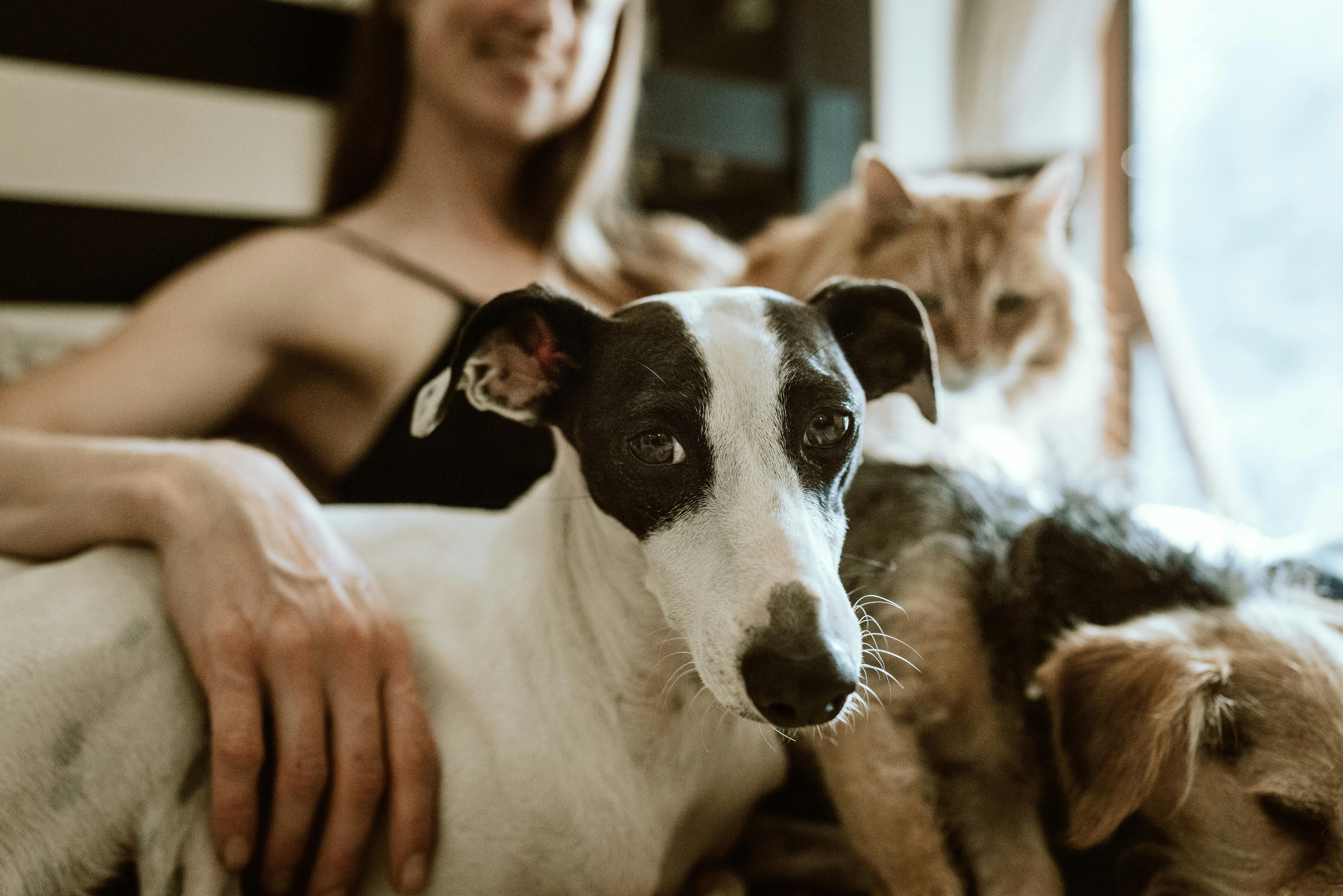- Home
- Dog Wellness
- Pet Behavior Decoded: How Do Cats and Dogs Differ In Expressing Affection?
3 min read
Pet Behavior Decoded: How Do Cats and Dogs Differ In Expressing Affection?

By Mel Lee-Smith
Published: 02/08/2021, edited: 09/07/2022
Save on pet insurance for your pet
You don't have to choose between your pet and your wallet when it comes to expensive vet visits. Prepare ahead of time for unexpected vet bills by finding the pawfect pet insurance.
You're confident your dog or cat loves you, but how can you be sure? After all, dogs and cats can't say, "I love you." But just because they can't talk doesn't mean they don't care about you! Here are a few ways dogs and cats use body language and specific behaviors to show affection.
It's all about the body language
Dogs and cats both use body language to express their devotion to their humans. But a wagging tail means something very different in dogs and cats. Read on to learn how canines and kitties use their eyes, ears, mouth, and tail to show their love.
The eyes
Has your dog ever gazed lovingly into your eyes? You're not just imagining it — that stare means they love you! When you and your dog look at each other, both of your oxytocin levels increase. Also known as "the love hormone", oxytocin helps mothers bond with their babies. Studies show oxytocin also plays a role in the bond between hounds and humans.
Cats also show affection using their eyes. Cats give "kisses" by blinking slowly at their humans. Try blinking slowly at your kitty and see if they "kiss" back!
The ears
If you're not sure how your dog or cat is feeling, glance at their ears. Flat ears pressed close to the head indicate fear in both dogs and cats. Front-facing ears are a good sign — they show dogs are paying attention and cats are feeling safe.
The mouth
Some pups love nothing more than giving their humans a sloppy kiss on the cheek. Cats are generally a little more reserved, but some cats do lick or "nibble" their humans to show affection.
What about smiling? Dogs do smile to convey emotions, but that emotion isn't always happiness. Some dogs wear submissive grins when they feel threatened. Ultimately, you know your dog best, so if your dog is grinning and they seem relaxed, they're probably happy as can be!
The tail
Tail wagging is perhaps where cats and dogs differ most when it comes to showing their love. Both dogs and cats use their tails to express all sorts of emotions, from happiness and curiosity to fear and uncertainty.
If your woofer's tail is wagging a million miles a minute, chances are they're excited. But if your cat is wagging their tail, watch out! This usually indicates they're upset, angry, afraid, or need some space. A vibrating tail that's straight up in the air or curled around you is your cat's way of saying, "I love you."
Affectionate behaviors unique to cats and dogs
Dogs don't purr and cats don't jump up on their humans when they walk through the door. Here are a few unique ways Fido and Fifi show their affection.
Dogs
Jumping up
Every pet parent has been on the receiving end of a jumping pupper. Your dog jumps up to be closer to you — literally. While the sentiment is cute, the execution might not be, especially if your barker is a big breed or they jump on a guest!
Leaning on you
Has Lassie ever leaned against your leg while you're sitting or standing? It's a common sign of affection, especially in big breeds who can't be picked up and cuddled. It's Sparky's way of telling you they want to be close to you and need a little extra TLC.
Following you everywhere
It's no secret that some canines can be a little clingy. Puppies follow their mothers around to stay safe, a behavior that continues into adulthood with their human parents. If your pup is on your heels everywhere you go, they're just letting you know they feel safest with you.
Cats
Kneading
Kittens stimulate their mothers' milk supply by pressing their paws against their mother's belly. Many cats continue to knead well into adulthood to show they feel comfortable and safe. Some cats will even knead your leg while sitting on your lap. Their sharp little claws might leave holes in your jeans, but it's worth it!
Bringing you their prey
Finding a dead or harmed animal your cat left on the back porch is a little gross, but the reasoning behind it is surprisingly cute!
To teach their kittens to hunt, mother cats return from a solo hunt with a dead or wounded animal. In a morbid but necessary demonstration, the mother cat shows her kittens how to kill their prey.
So when your cat brings you an animal, whether it's dead or harmed, they're trying to teach you how to hunt. It's because they consider you part of the family!
Headbutting and scenting
Your cat headbutting you or rubbing their cheeks
against you is a surefire sign your cat loves you. When your cat does this, they're actually "scenting" you. Not only is this a way to mark their territory, but it also shows they trust you.
You may also like
